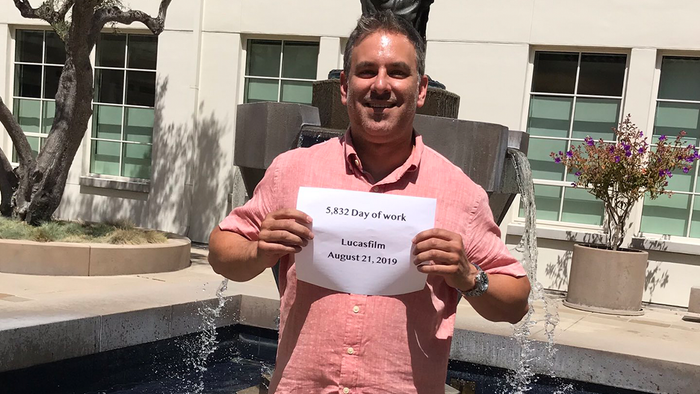What we learned from our Kickstarter
Sebastian Chedal reviews the good and bad from our recent Kickstarter. You aim for success, but from failure you learn. Join me as I analyze the feedback from our team, backers, experts and a cup of coffee.

Perseverance is the hard work you do after you get tired of doing the hard work you already did.
~ Newt Gingrich
This is my first blog post on Gamasutra, today I will explore the lessons learned from our recent Kickstarter: https://www.kickstarter.com/projects/1806523158/galacollider-master-your-strategy-conquer-the-gala
The last couple of years has been a continuing series of opportunities that has led to me becoming the president of an indie game company. It's been a fascinating journey.
Our project grew from a humble concept on paper playing cards, to what is now a global team of contributors.
Each step of the way community has come together to support our game. We got funding from friends and family, looked for the best people we could find and aimed for the top.
There was a lot of momentum leading up to the Kickstarter campaign, our team had become very large, we had more than 25 contributing artists, an impressive board of directors, film and TV talent, tons of materials and a long list of future features planned for the game.
Everyone we met loved the concept, thought our artwork was great, saw us as original and thought our expandable instead of collectible model was very attractive. The general consensus within the team was that our Kickstarter would be a success... so what went wrong?
The progression
When the campaign launched we didn't see a large uptake in backers. We had some growth for the first 3 days but we could already see it stagnating. Smaller press had taken interest but the larger press was staying on the side still. How could we stimulate more interest?
One day 4 of the campaign we were at PAX Prime. This event was a huge opportunity of us. We handed out tons of fliers, met and spoke with a lot of people, vendors, fellow indie developers and press. We got a lot of interest from people, people were genuinely interested in the game and became excited when we demoed it to them. The week after PAX we saw a healthy rise on our Kickstarter from the event.
Towards the middle-end of the campaign we did an AMA on reddit with Skaff Elias and Stephan Brissaud. Two veterans from Magic: the Gathering who happen to be on our board of directors. The AMA brought us a fresh wave of enthusiastic people, and a shout out from Divinity II was equally rewarding but in the end, despite getting really great reviews from the press, we just weren't able to sustain an upward engine.
The two keys
As the campaign progressed it became obvious to us that there were two key ingredients missing: We didn't start the campaign with an active, engaged audience and we weren't able to secure big press events / publications leading up to, and timed for day1.
Several of us, including myself had been on, or a part of a Kickstarter in the past. We knew that we weren't starting the campaign with a preexisting audience and we hoped that the press, and the public would catch wind of our project as it went and would jump on and spread the word to keep the momentum going as it grew organically.
Maybe a few years back this was true, but now a days you just can't rely on the platform to promote your project for you. Kickstarter is saturated and people are more reluctant to back projects they are less sure about.
Skaff Elias told me in a meeting I had with him in Seattle that there are two kinds of projects that do inherently well on Kickstarter: those that are funny and remakes. Our project wasn't silly, and it's a new IP so we didn't hit either of these notes.
At PAX did have the fortune to meet and talk with two of the main guys behind NovaBlitz. Their story was interesting to me because they also had a first Kickstarter that didn't make it and then they tried again later and were successful the second time around. They emphasized the importance of building a core base of dedicated players, how important getting a deck builder was to the game, and a demo product that was properly polished.
Towards the end of our campaign we did start to get bigger presses interest, but alas by then our momentum was already terminal.
The importance of a solid foundation
Our game demo at the time was lacking some key features. We didn't have a tutorial, no solo mode, no in-game lobby to find opponents, and only developer graphics. The lack of these features meant that a good number of our audience wasn't able to engage in the product because it missed something that was important to them.
Essentially a player looks for a set of things. What person A looks for might not be the same as person B, but they both might have a list of say 3 things that are important to them. Person A might not care about the missing tutorial but the developer art turns them off, and Person B might not care about the developer art but they really want to play vs. the computer instead of trying to find an opponent.
We had always planned to complete these things, we just didn't have them completed yet because - that's what the Kickstarter funds were going to help us do. Or so we thought.
Simplifying the message
Initially we would talk about our game as a hybrid between a 4X game and an LCG. But if you say that to anyone their eyes will gloss over. People who play 4X games don't even know they are playing a 4X game! (what is a 4X game?) (what is an LCG?)
Once the campaign was up we got feedback that we needed to simplify the message, slim down the content and rethink our rewards.
Leading up to the Kickstarter we spent a long time thinking about our economic model. We wanted to build a game where getting all the cards wasn't an impossible roulette that costed you hundreds of dollars, and yet still catered for and provided for free-to-play players.
Getting the two to work together was a complicated balancing act and we felt that we hit the mark when we settled on splitting our expansion sets into smaller expansion packs of 15 cards each (3 copies of 5 cards per pack). Free players could pick up the odd pack here and there, while paying players could affordably buy them all.
Even though the numbers added up well, the model wasn't traditional. To our surprise very few people know what an expandable card game is, and even fewer could be educated to understand what that meant in a free to play environment.
Free to Stigma
Something that we learned as we entered the Kickstarter was also how negative a vast majority of the public feels now a days about Free to Play (F2P). Maybe even more negative than they feel about random packs in a card game?
We had several backers tell us that the fact that we had a free to play model made them hesitant and suspicious. Were we going to set the prices and grind rate so high as to try and squeeze out every dollar from them that we could?
I also got advice from an individual who owns a large publishing company that F2P games typically do poorly on Kickstarter. Why back something that is free that I can just try later instead?
Conclusions
If your game is not mass appeal and it isn't a remake or funny, you need to establish an existing fan base in order to make the first days of your Kickstarter a success.
Make sure you already have a lot of press interest leading up to the release, preferably from some bigger press. You want to already be in the public eye at least a month before you go live.
Work to find and develop a core set of dedicated fans / players going into the Kickstarter. We've been told that you want at least 25 champions to hit $40,000 with low stress. 25 hardcore fans are worth their weight in gold and far better than advertising money.
Make sure you have a demo of your game that hits all the core notes people are looking for. A game that is too far in Alpha will turn off people who would otherwise be backers.
Make sure your game is really easy to understand. If it is a game with a lot of depth and material (like ours) you need to find a way to simplify the message and lock away / tease the deeper stuff..
Make sure your game's economic model is super easy to understand. If you are going to innovate on your economic model you probably shouldn't try to do that as part of the Kickstarter unless the innovation is itself is an incredibly simple solution.
Be aware that a lot of people have negative feelings about Free to Play and are inherently suspicious of such models
Thank you for reading and I hope some of our insight will help you to find success!
I'd like to end on a positive note that we've not given up on our game. The feedback we've gotten on the product itself, from players and the press has been really positive. The team is still highly motivated. Yes it is tough now that we didn't get funded, we are exploring many avenues to get our game out.
Rain or shine, we are on this journey until we make it.
Sincerely,
Sebastian Chedal
Game designer, president, creative director
NeoCrux Ltd.
official twitter: @neocruxgaming
personal twitter: @schedal
learn about the game: http://galacollider.com
help us financially: http://patreon.com/chedal
Read more about:
BlogsAbout the Author(s)
You May Also Like








